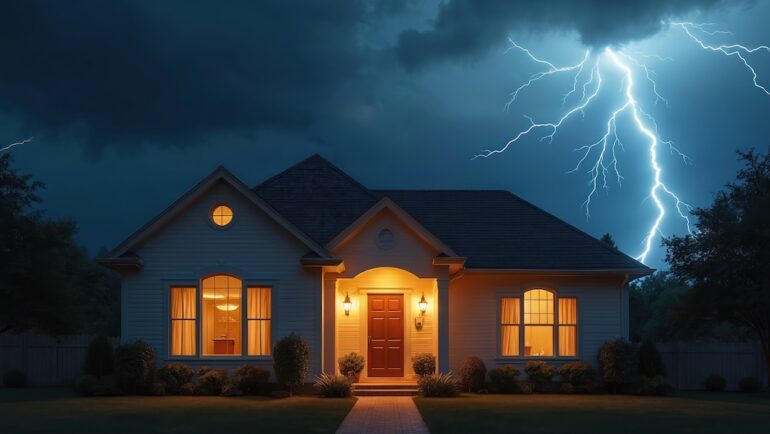Are lightning rods a good way to protect your home? Lightning strikes cause approximately 4,400 house fires per year. Here’s how to determine if a lightning rod system is right for you.
A bolt from the blue
When lightning strikes nearby, it is terrifying. The sound is deafening and the flash blinding. It can split a tree and set it on fire. When a building is struck, superheating can initiate a fire, and the heat flash transmitted through the structure can cause mini-explosions of building materials, thereby spreading the fire. The electrical system can be destroyed.
Surprisingly, metal roofs are not more attractive to lightning than other types of roofing materials. Lightning is attracted to the tallest object regardless of material. Therefore, a nearby tree, if taller than the house, is more likely to get struck.
Would lightning rods be a good investment for your home?
Do you live in a region prone to thunderstorms? Most of the southern states, from Texas to Florida, are highly prone to severe thunderstorms. In fact, Florida is unofficially the lightning capital of the world. With a higher risk for lightning strikes than other states, lightning rods might make sense for homes in these areas.
- Homes in states farther north—or otherwise not prone to lightning storms—present less of a risk, so lightning rods are not needed.
- If taller objects (such as trees) do not surround your house or it’s somewhat isolated from other structures, the home is more vulnerable to a strike.
- Retrofitting a house with lightning rods is often more expensive than including them during home construction.
Installation and cost
Lightning rods stand a little taller than the roof and are fashioned to have a decorative appearance. A cable connects the rod down through the structure of the house into the ground, thus channeling the massive electrical charge into the earth, or “grounding” it. You may need more than one rod, depending on the size and configuration of your house. The cost of installing a lightning rod system ranges between $1,000 and $2,000.
Related – When Disaster Strikes: Handling Flood and Fire Damage


